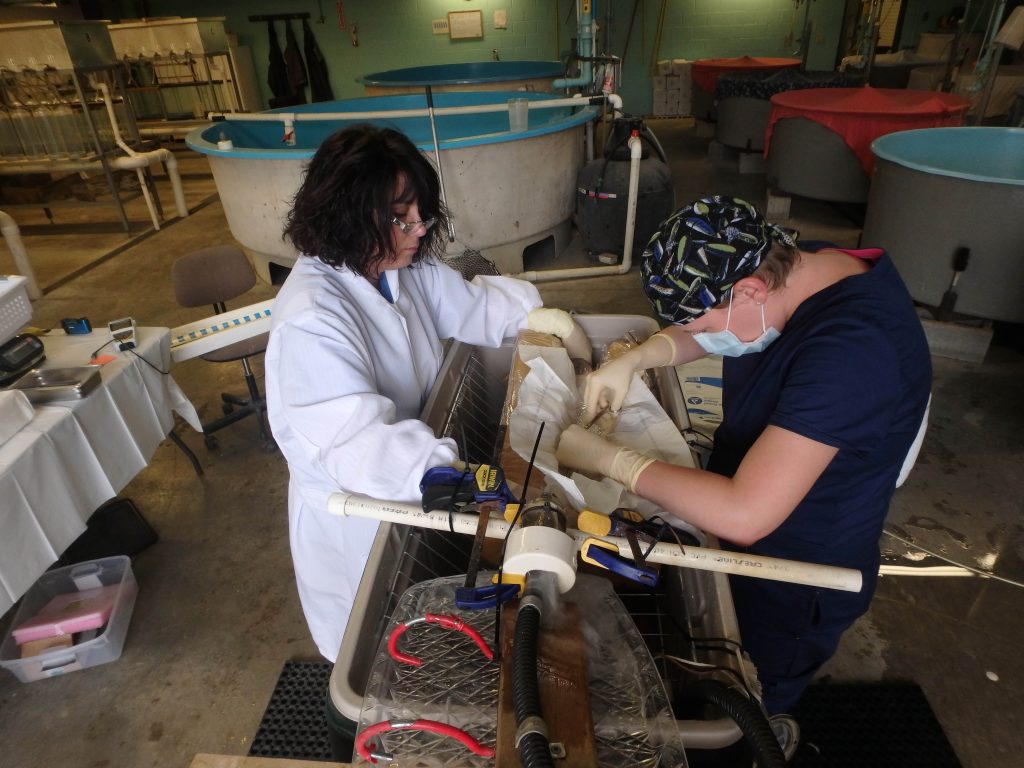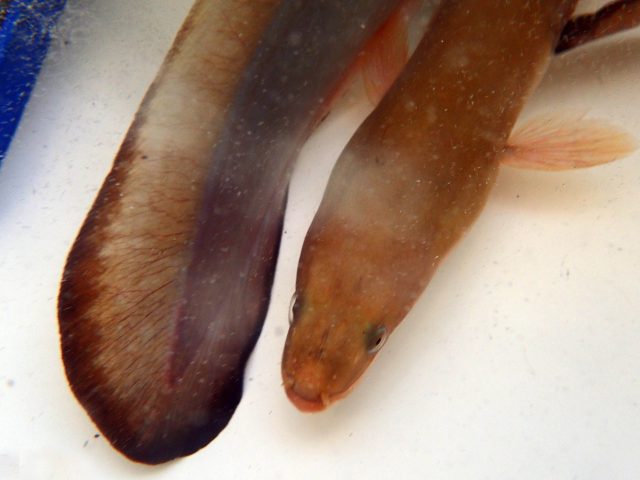By John Balch
News-Leader staff
“The incredible migration of the American eel is definitely fascinating,” said Jeff Quinn, a stream and river fisheries biologist with the Arkansas Game and Fish Commission, about the epic 3,000-mile journey that leads the eels into Arkansas’s rivers – including the Ouachita, Little Missouri and lower Caddo.
Quinn is heading up an ongoing AGFC study of the eels and back in the warmth of September he was in the Little Missouri River below Narrows Dam near Murfreesboro to “electrofish” for the eels in attempt to establish numbers and locations. Another part of the study involves tracking and documenting some of eels which have been surgically fitted with transmitters before the start of the migration season.
The goal of the AGFC’s eel study is to understand downstream movement migration of eels past dams to the sea. “(The eels) spawn in the Atlantic Ocean in the Sargasso Sea near Bermuda,” Quinn said.
The eels are believed to spawn in the ocean at depths of up to 15,000 feet where they begin as larvae that slowly drifts towards the coasts before taking on several life stages to continue their journey. Quinn said the the larval grow up in the coastal areas as “un-pigmented glass eels.” They later gain pigment and push ahead.
“The females migrate hundreds of miles upstream” in a yellow phase, apparently leaving behind the males near the freshwater openings to the river basins.
“We think it takes the eels three to four years to get Arkansas,” Quinn said, “and they have to move around four navigation dams.”

The females are thought to stay in the state’s rivers for 10 to 20 years and can grow to be up 50 inches long. (The state record for the American eel weighed in at 5.4 pounds and was caught in the Spring River in 2015.)
When the time is right during Fall-Winter high-flow events, the eels start their return to the ocean to spawn.
“Every time I see an eel, I think about how far it has traveled, because it really is an amazing journey,” said Quinn.
American eels are the only species of eels found in Arkansas. They are found statewide in rivers that do not have large dams that block their migration and Quinn said they are most abundant in the large rivers like the White and Ouachita.
The eel project is in its second year of study and came about from attempts in 2005 and 2011 to get the American eel listed with the Endangered Species Act. Quinn said the eel is now considered a “species of greatest conservation need” in the state’s Wildlife Action Plan.
“We need to understand the basic biology of a species to make informed management recommendations about water development projects, especially planned drawdowns at Felsenthal Lock and Dam” – located in central lower Arkansas at the confluence of the Ouachita and Saline rivers.
To help accomplish the goal, 35 eels were fitted with transmitters that trigger sensors set up near dams as the fish as they move by. The AGFC is partnering with the U.S. Army Corps of Engineers, whose biologists already have sensors deployed in Louisiana for another project involving pallid sturgeon. Quinn gets an assist in the state study from USACE biologist Dr. Todd Slack, who heads up the Corps’ research and developmental environmental laboratory.
“We decided to do this project to take advantage of their equipment investment,” Quinn said.
When faced with a smaller dam and the conditions are just right, Quinn said the nocturnal bottom-feeders will actually leave the water and crawl across the ground. Some anglers have even claimed they caught the eel by casting their baits up on land. Whether on land or in the water, the eel is noted for hitting the bait hard and then putting up a deceptively strong fight.
The eels do not emit a shock like their electric cousins and are not considered dangerous. But, they do have teeth and are coated with a heavy slime. State anglers have noted the eel, which can be processed liked a catfish, have a sweet flavor and can be smoked, grilled, fried or baked.
Quinn seems conflicted about anglers pulling eels from the state’s rivers – whether intentional or not.
“The eels are just an interesting fish,” Quinn said in a recent online article.
“They have such an epic journey just to get to Arkansas, and it would just be a shame if they couldn’t make it back.”








